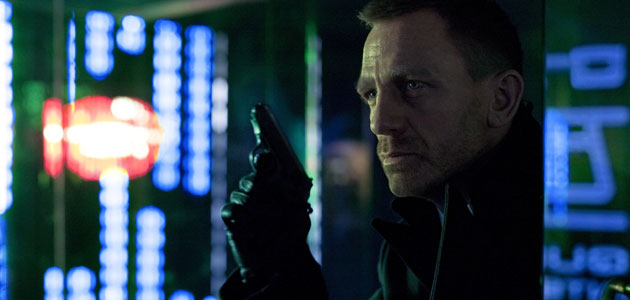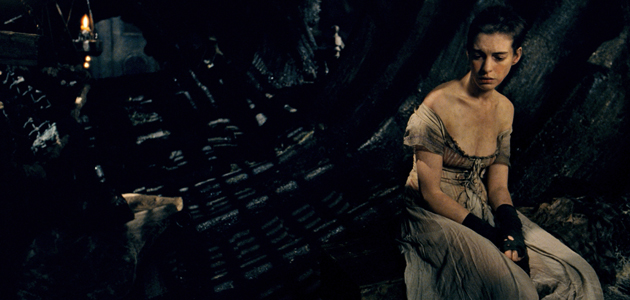Graphic
Five cinematographers frame their pictures
We could go on for a thousand words about the following five pictures. But better to simply let the cinematographers who shot them explain the origins and execution of a few of our favorite film images of the year.
— Glenn Whipp, Los Angeles Times
‘Skyfall’
Cinematographer: Roger Deakins
‘Life of Pi’
Cinematographer: Claudio Miranda
‘The Impossible’
Cinematographer: Oscar Faura
‘Les Misérables’
Cinematographer: Danny Cohen
‘Lincoln’
Cinematographer: Janusz Kaminski
|
The scene
James Bond hunts an assassin in a glass office tower in Shanghai, the pursuit heightened — and highlighted — by walls of glass and neon advertising images of sea jellies. |
Birth of the shot
“We were coming out of the monochromatic gray of England, so we wanted to arrive in Shanghai with a bang — a lot of color and movement of light. Gradually we came to the idea of making everything glass, so the whole thing was this big box of magical reflections.” |
Making it work
“We built a model to see how the reflections would work and so we could position the big billboards and have the assassin firing at the hotel room in the right position. Then we built the set on the soundstage and spent a number of weeks rigging it, positioning every light. The jellyfish originally were just a stand-in image, but it was such a good choice, it stayed.” |
Shot significance
“The calming, poetic nature of the jellyfish imagery builds the tension of the scene. If the imagery had been frenetic, like what you usually see on billboards, we wouldn’t have been able to build that sort of menace. And that’s what we were after: the ultimate cat-and-mouse scene.” |
|
The scene
“Not long after losing his family in a shipwreck, a waterlogged Pi cries out to God with a mixture of anger, defiance and resignation.” |
Birth of the shot
“We spent 21/2 months at this tank we built that was like 150 feet wide and 300 feet long and 50 feet tall. Doing that, we could create any weather and shape the lighting and sustain the mood. Initially I thought this was a smaller movie, but it didn’t turn out to be that at all. It got bigger and bigger.” |
Making it work
“We spent a long time working out the angles. Every scene on the water required meticulous planning. To get around the tank, we had a spider cam, but sometimes if the weather we created got too rough, we’d work on cranes. Suraj [Sharma, who plays Pi as a teenager] is a truly amazing soul and did his own stunts. He’s not on a gimbal. He’s in the tank with these 8-foot waves crashing over him.” |
Shot significance
“Pi’s surrendering to God. He initially thinks the storm is kind of glorious, kind of like when he’s on top of the boat when the ship sinks. It’s almost like a little repeat of that, but now the reality of the situation is sinking in even more.” |
|
The scene
“Following a tsunami, a mother and son cling desperately to a mattress, trying to stay together.” |
Birth of the shot
“Director Juan Antonio “Bayona wanted to shoot the flood placing the camera close to the characters to make the viewer live the tragedy firsthand. This shot’s function is more descriptive, helping locate the characters.” |
Making it work
“The water tank had metal rails in its base where we could move actors and objects like the mattress in a controlled way. The water speed and mattress speed had to be similar. The sequence had a lot of post-production work, but in this case, what the camera captured was all real due to the high position.” |
Shot significance
“In this frame, we find several of the most essential elements of the film: the destructive power of infuriated nature and the extreme effort of two people who want to survive and help each other.” |
|
The scene
“The tragic Fantine (Anne Hathaway) sings the anguished story of her hard-knock life, “I Dreamed a Dream.” |
Birth of the shot
“With the big musical numbers, [director] Tom [Hooper] wanted to do them in one take, so if the singer nails the song and the shot sustains itself, the audience gets sucked in emotionally. So we wanted to be as unfussy as possible.” |
Making it work
“We did six takes, and once she sits down, it’s a single shot. We filmed the whole movie with three cameras all the time, so I had to light it for three different cameras, three different lenses. It was a bit of a juggle, but it works.” |
Shot significance
“There’s hard moonlight hitting her, with a few candles dotted about. For the close-up, the most powerful bit is when she tilts her head slightly down and you get a lot of neck. Her head’s butted up to the right side of the frame, and there’s a lot of bare neck, which lends a fragility to the shot and this song where she’s singing about her life falling apart.” |
|
The scene
“The movie opens with a battle between Union and Confederate soldiers in a muddy stream, the brown and deep-blue color scheme broken only by an American flag flying through the shot.” |
Birth of the shot
“[Director] Steven [Spielberg] wanted to establish immediately the historical setting, that we’re in a battle between two opposite sides. The flag coming through gives you a glimpse of the reality of the war.” |
Making it work
“We shot outside Richmond [Va.]. The morning was overcast, and when the sun came out, we added just enough smoke and rain to soften the image and maintain lighting continuity. We had three cameras that day and shot it really fast. It was over in six or seven hours. It’s the only shot where we used three cameras.” |
Shot significance
“The movie is about the war, its costs and why it was fought. We don’t see war often in the movie, but it was important to establish it so the audience understands the stakes.” |









